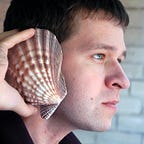Is Avril Lavigne a genuine punk artist?
Many people argue that Avril Lavigne isn’t a genuine punk artist. It’s widely acknowledged that she and her producers capitalized on her teenage sexuality, with her image in underwear being reproduced and disseminated in millions of copies. This is uncommon in the punk movement, where representatives are typically not focused on sexual attractiveness. However, if we disregard Avril Lavigne’s image and solely listen to her songs, can we classify them as punk rock?
The lyrics of most of her songs revolve around the desire for authenticity in relationships between the opposite sexes. In contrast, real punk bands like the Sex Pistols critique consumerism, societal norms, authority figures, political corruption, and the constraints of everyday life.
Both Avril Lavigne and these punk bands criticize attempts to improve human nature. However, Avril Lavigne seems to focus solely on improving relationships between the opposite sexes, without showing interest in transforming larger social structures.
We could argue that she represents the petty bourgeoisie, while real punks represent the working class. This suggests that Avril Lavigne’s income is substantial enough to disinterest her from fundamental social transformations. She doesn’t critique consumerism; instead, she participates in its stimulation, as evidenced by the product placements in her music videos. Manufacturers hope to boost their sales by featuring their products in Avril Lavigne’s videos.
On the other hand, it is known that the vocalist of the post-punk band “Bauhaus,” Peter Murphy, participated in advertising for the company Maxwell.
Of course, we can’t consider Murphy a punk, although his authenticity is more believable than that of a seductively naked Avril Lavigne, on whose ribcage and fingers the tatoo “Fuck” is visible. This “Fuck” does not seem to be an offense or profanity directed at something. Instead, it appears to hint at the possibility of sex with a young and attractive girl.
But is it possible to discuss “punk authenticity” at all if even the Sex Pistols’ career began in a fashion clothing shop? Sex Pistols’ musical career had a unique and unconventional beginning intertwined with the fashion scene of the time. Malcolm McLaren and Vivienne Westwood, renowned for their avant-garde fashion designs, operated a boutique named “Too Fast to Live, Too Young to Die” on London’s King’s Road in the mid-1970s. The shop served as a hub for the emerging punk culture, attracting rebellious youth interested in anti-establishment fashion.
McLaren and Westwood’s shop not only sold clothing but also served as a gathering place for musicians, artists, and other figures of the burgeoning punk movement. McLaren, in particular, was deeply immersed in the punk scene and recognized its potential for cultural disruption.
It was in this vibrant and subversive environment that McLaren and Westwood encountered the Sex Pistols. McLaren, who became the band’s manager, saw in them the embodiment of punk’s anti-authoritarian ethos. He recognized their raw talent and potential to provoke social and cultural change.
McLaren’s management of the Sex Pistols, coupled with Westwood’s distinctive fashion designs, helped shape the band’s image and identity. The provocative and confrontational style of both the music and the fashion associated with the Sex Pistols became emblematic of the punk movement.
Thus, the connection between Sex Pistols’ musical career and McLaren and Westwood’s fashion shop illustrates the interconnectedness of music, fashion, and cultural rebellion during the punk era. The shop served as a catalyst for the band’s formation and played a crucial role in shaping their image and impact on popular culture.
Maybe when we say “a genuine punk artist,” we are simply falling into a big illusion and self-deception about counter-culture. Is there really a significant difference between Avril Lavigne and the Sex Pistols?
